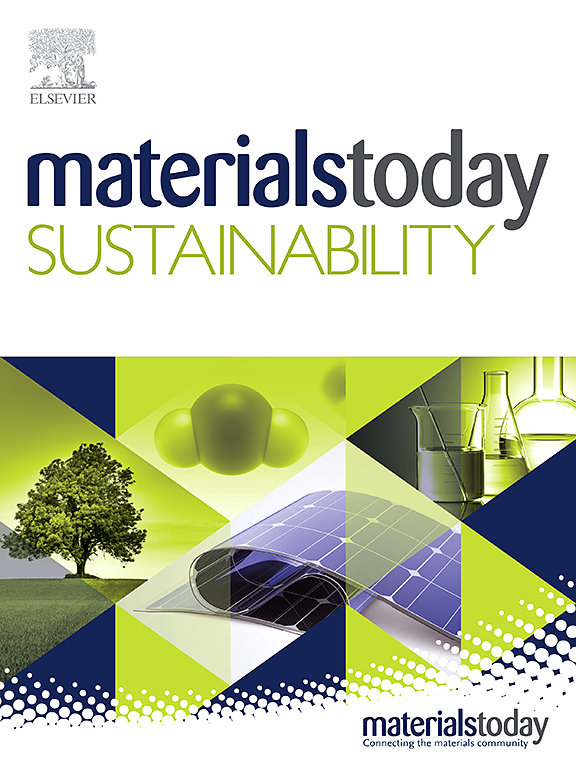Design and modify the wood cellulose fiber reinforced high density polyethylene nanocomposite with its structurally interconnection investigation
IF 7.1
3区 材料科学
Q1 GREEN & SUSTAINABLE SCIENCE & TECHNOLOGY
引用次数: 0
Abstract
The development of cellulose derivatives for advancing green polymer composites is a promising research area. In this study, we present a simple yet effective method for large-scale production of non-carbonized, chemically modified wood cellulose-reinforced high-density polyethylene (HDPE) composites, with good mechanical and thermal behaviors. This approach employs alkali bleaching treatment followed by sulfuric acid hydrolysis, without the residuals such as lignin, hemicellulose, etc. The hydroxyl (-OH) groups are detected in the wood cellulose which can be functionalized to surface of HDPE, providing flame-retardant properties. While, the mechanism of hydrogen bonding between the wood cellulose fibers (WCF) and polyethylene molecular chains is developed. Additionally, the incorporation of WCF significantly influenced the pyrolysis gas generation, with Thermo-Gravimetry-Fourier Transform Infrared spectroscopy (TG-IR) to analysis the pyrosis product with its infrared fingerprint and interconnection bonding. At an optimized loading of 3 % WCF, the composite achieved a maximum tensile strength of 12.01 MPa and an elastic modulus of 178.24 MPa, reflecting improvements of 33.6 % and 35.8 %, respectively. Also, a 38 % reduction in smoke emissions is reached. This study provides a new strategy for the development of low-cost and environmentally friendly biomass-based composites, which solves the dual problems of unsustainable and insufficient performance of traditional fillers, and has a broad application prospect in the fields of packaging and flame retardant construction.
设计和改性木质纤维素纤维增强高密度聚乙烯纳米复合材料,并对其结构互连进行研究
开发纤维素衍生物以推进绿色高分子复合材料是一个很有前途的研究领域。在这项研究中,我们提出了一种简单而有效的方法来大规模生产非碳化,化学改性木材纤维素增强高密度聚乙烯(HDPE)复合材料,具有良好的机械和热性能。该方法采用碱漂白后硫酸水解处理,不含木质素、半纤维素等残留物。在木质纤维素中检测到羟基(-OH)基团,可以功能化到HDPE表面,具有阻燃性能。同时,研究了木质纤维素纤维(WCF)与聚乙烯分子链之间的氢键机理。此外,WCF的加入对热解气体的生成有显著影响,利用热重-傅里叶变换红外光谱(TG-IR)分析热解产物的红外指纹图谱和互连键合。当WCF含量为3%时,复合材料的最大抗拉强度为12.01 MPa,弹性模量为178.24 MPa,分别提高了33.6%和35.8%。此外,烟雾排放量减少了38%。本研究为低成本、环保的生物质基复合材料的发展提供了新的策略,解决了传统填料性能不可持续和性能不足的双重问题,在包装和阻燃建设领域具有广阔的应用前景。
本文章由计算机程序翻译,如有差异,请以英文原文为准。
求助全文
约1分钟内获得全文
求助全文
来源期刊

Materials Today Sustainability
Multiple-
CiteScore
5.80
自引率
6.40%
发文量
174
审稿时长
32 days
期刊介绍:
Materials Today Sustainability is a multi-disciplinary journal covering all aspects of sustainability through materials science.
With a rapidly increasing population with growing demands, materials science has emerged as a critical discipline toward protecting of the environment and ensuring the long term survival of future generations.
 求助内容:
求助内容: 应助结果提醒方式:
应助结果提醒方式:


